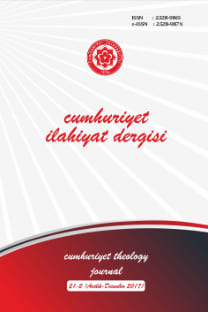Demir, Abdullah. "Ebû İshâk Zâhid es-Saffâr'ın Kelâm Yöntemi". Doktora tezi, Cumhuriyet Üniversitesi Sosyal Bilimler Enstitüsü, Sivas 2014.
Ebû İshâk İbrâhim ez-Zâhid es-Saffâr, Mâtürîdî kelâm anlayışının önemli bir temsilcisidir. O, Mâtürîdîliğin ortaya çıktığı sosyokültürel çevre olan Mâverâünnehir bölgesinin Buhara şehrinde, takriben 450/1058 yılında doğdu, öğrenimini burada tamamladı ve Merv şehrine sürgüne gönderilinceye kadar Buhara Hanefî âlimlerinin reisi olarak anıldı. Sürgün dönüşü Buhara'da 534/1139 yılında vefat etti. Bu çalışmada, onun kelâm yöntemi konu edildi. Giriş bölümünde; araştırmanın konusu, önemi, amacı, yöntemi ve kaynakları hakkında bilgi verildi. Saffâr'ın yaşamını sürdürdüğü Mâverâünnehir bölgesinin V. (XI.) ve VI. (XII.) yüzyıllardaki siyasî, sosyoekonomik ve ilmî durumu ile bölgede varlık gösteren din, mezhep ve felsefî akımların etkinlikleri birinci bölümde tespit edildi. İkinci bölümünde onun hayatı, ilmî kişiliği, eserleri ve atıf yaptığı kaynaklar belirlendi. Son bölümde ise Saffâr'ın kelâm yöntemi tanılmaya çalışıldı. Bunun için onun günümüze ulaşan Telhîsü'l-edille li-kavâ?idi't-tevhîd ve Risâle fi'l-kelâm adlı kelâm eserleri tahlil edilerek öncelikle itikadî konularda akla değer vermeyi ve gerektiğinde fikrî tartışmalara girmeyi savunan kelâm ilmine bakışı ve kelâm müdâfaası tespit edildi. Daha sonra bilgi teorisi kapsamına giren bilginin tanımı, imkânı, kaynakları ve bilgi türleri hakkındaki görüşleri ile savunduğu ve eleştirdiği bilgi anlayışları belirlendi. Ayrıca onun kelâm yöntemini ortaya koyabilmek adına aklın ve naklin bilgisel değeri konusuna bakışı ele alındı. Zita bu husus, mütekellimlerin ve İslâm mezheplerinin yöntemlerinde belirleyicidir. Son olarak görüşlerini temellendirirken ve savunurken Saffâr'ın kullandığı istidlâl türleri belirlendive örneklerle tanıtıldı.
Demir, Abdullah."The Kal?m Method of Ab? Is??q al-Z?hid al-?aff?r".PhD. Dissertation, Cumhuriyet University Graduate School of SocialSci-ences, Sivas/Turkey 2014.
Abu Ishaq Ibrahim al-Zahid al-Saffar is one of the important representatives of the Kalam thought of the Hanafi-Maturidi School. He was born in A.H. 450/ C.E. 1058 in Bukhara that is one of the city of Transoxiana/Mawara al-nahr where Maturidi School has been emerged around this socio-cultural environment. He completed his education and served as a leader (rais/ sadr) of the Hanafite scholars there until he was exiled to the city of Marv. Upon his return from exile, he passed away in Bukhara in A.H. 534/ C.E. 1139. The present study aims to determine his method in Kalam. The introduction outlines the subject, significance, purpose, method and sources of the research. In this study, it was employed a method that focuses on a person in which he/she is examined with his/her views and thoughts by taking into account his/her socio-cultural factors. By doing this, the first chapter of this study deals with the political, socio-economic and scientific situation in Transoxiana, and the activities of diverse religions, sects and philosophical schools in this region in A.H. V-VI/C.E. XI-XII. In the second chapter, it studies al-Saffar's life, scientific personality, works as well as the sources that he made references to in his works in detail. In the third chapter, the kalam method of al-Saffar has been tried to be determined. For this purpose, it analyzes his extant works, Talkhis al-adilla li-qawa?id al-tawhid and Risalah fi al-kalam and elaborates first at his defense of the Kalam that gives a great importance to reason (?aql) and to intellectual debates, if necessary, in theological issues. Then it explores his theory of knowledge with his ideas on the definition, possibility, sources and types of knowledge, and the epistemological understandings he defensed or criticised. Furthermore, to determine his Kalam method, it evaluates his approach towards the value of 'aql and naql (Qur?an-Hadith) as sources of knowledge. Since this issue is a distinctive tool for unveiling the kalam methods of different mutakallims and Muslim sects. Finally, it finds out the types of istidlal, meaning inference of one thing from the other that he used when he argues and defends his views, and illustrates with examples
